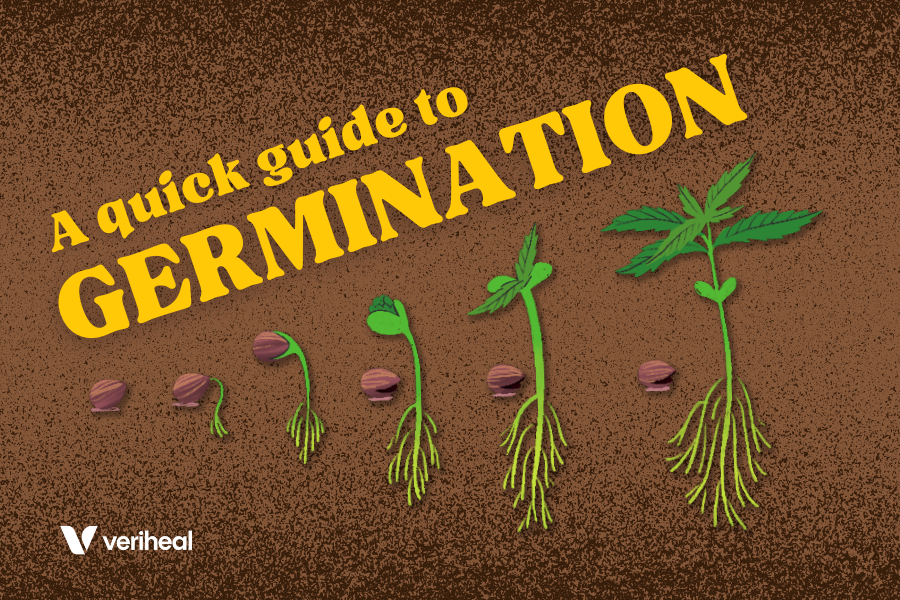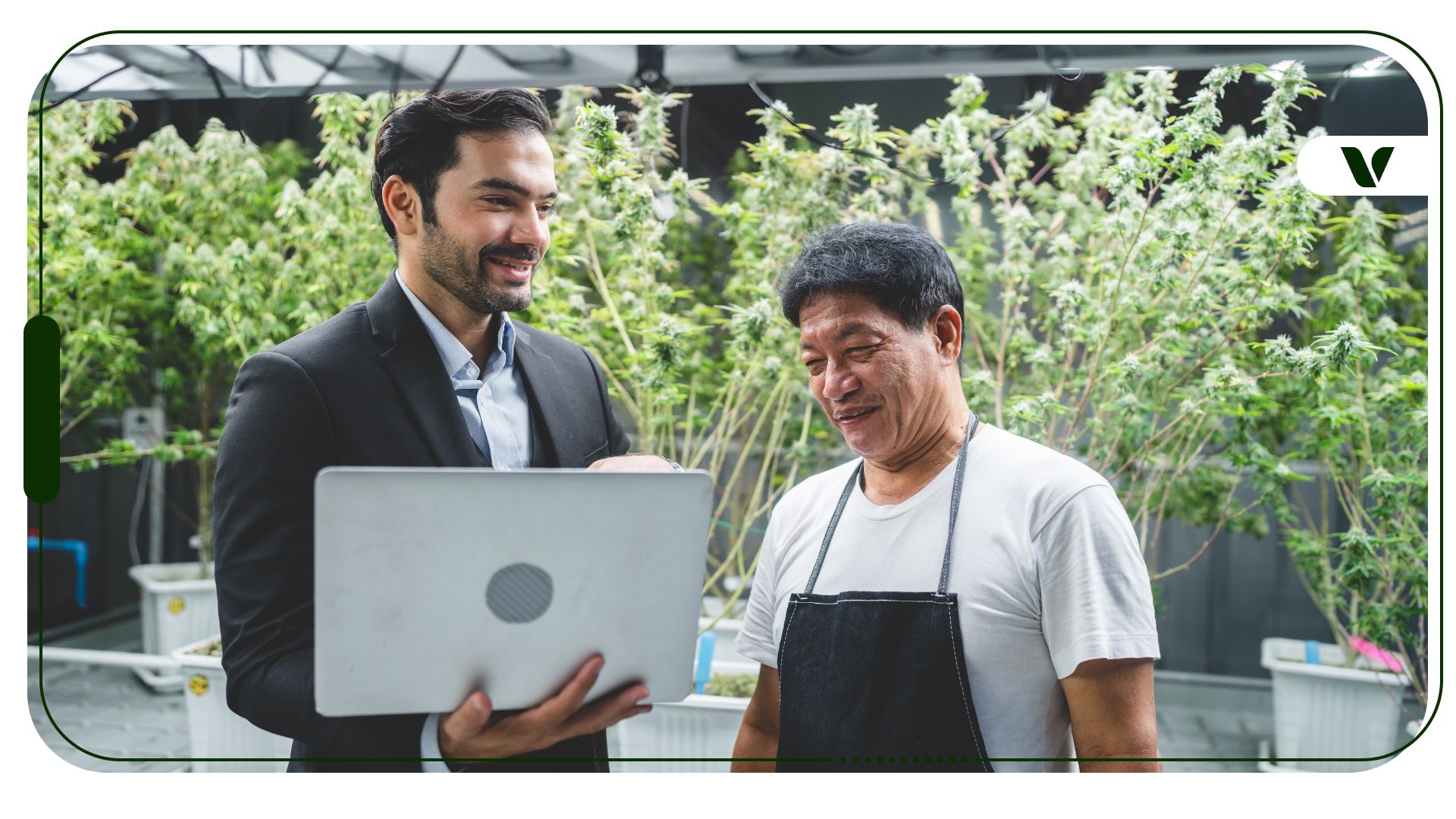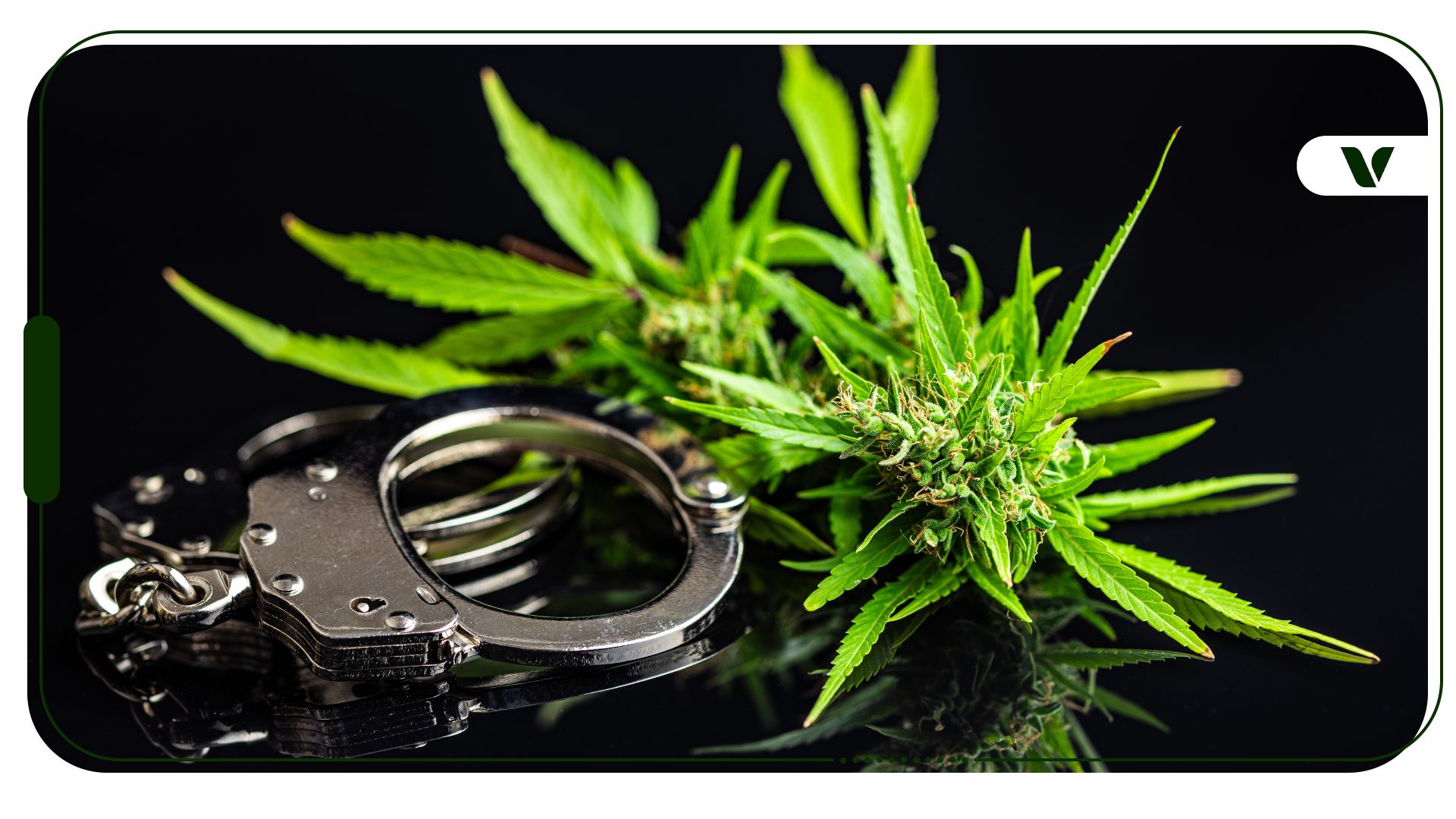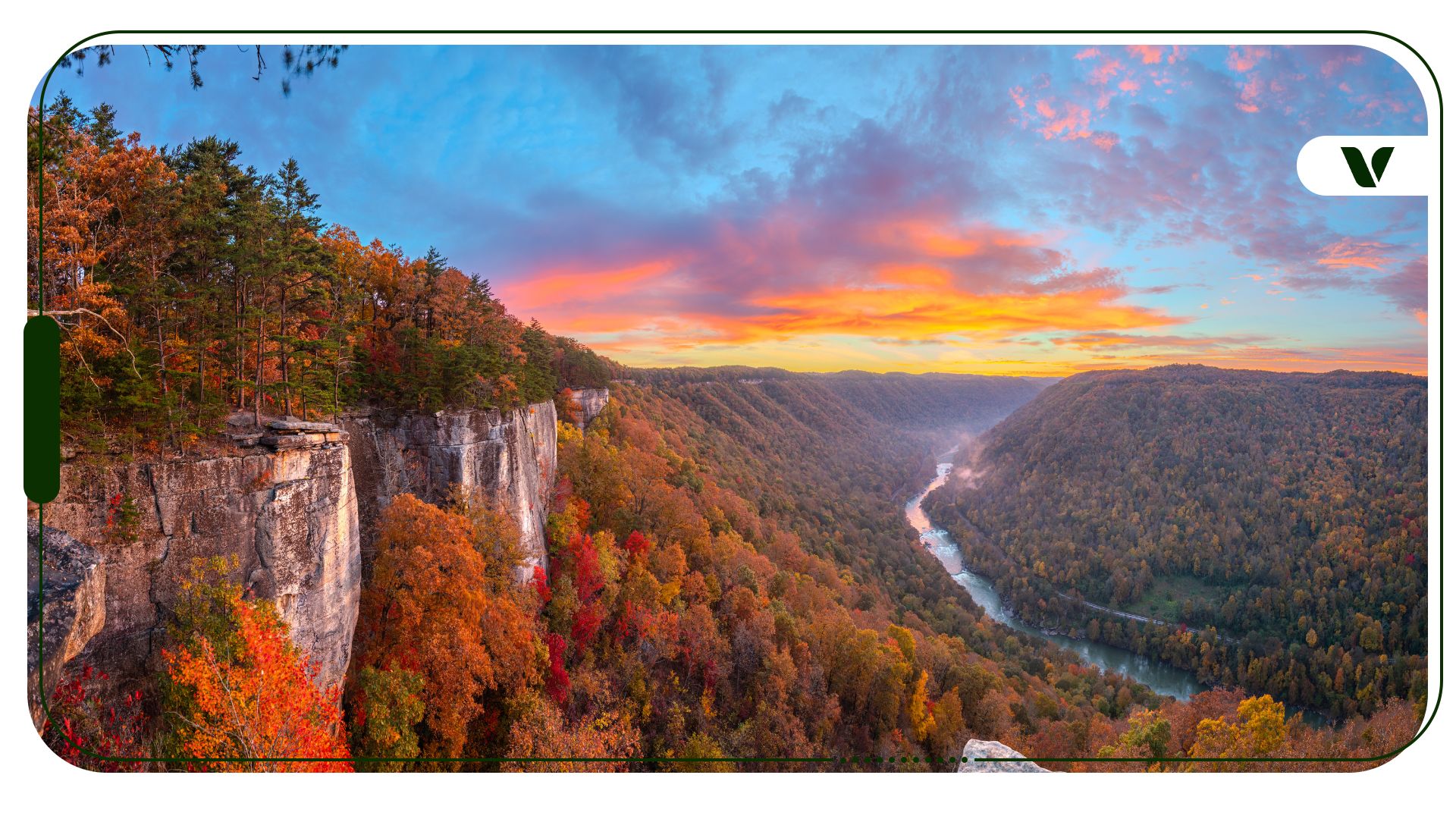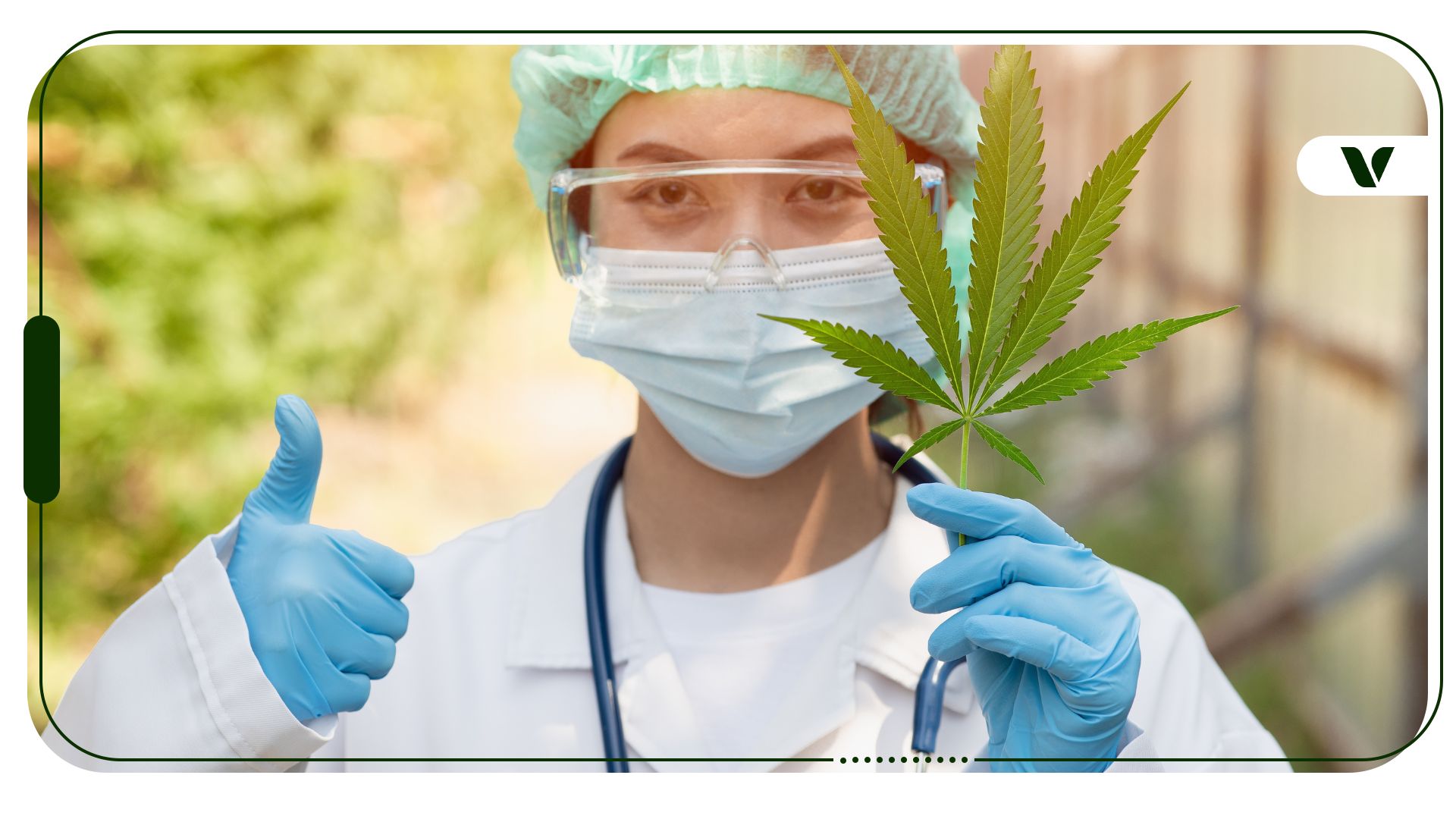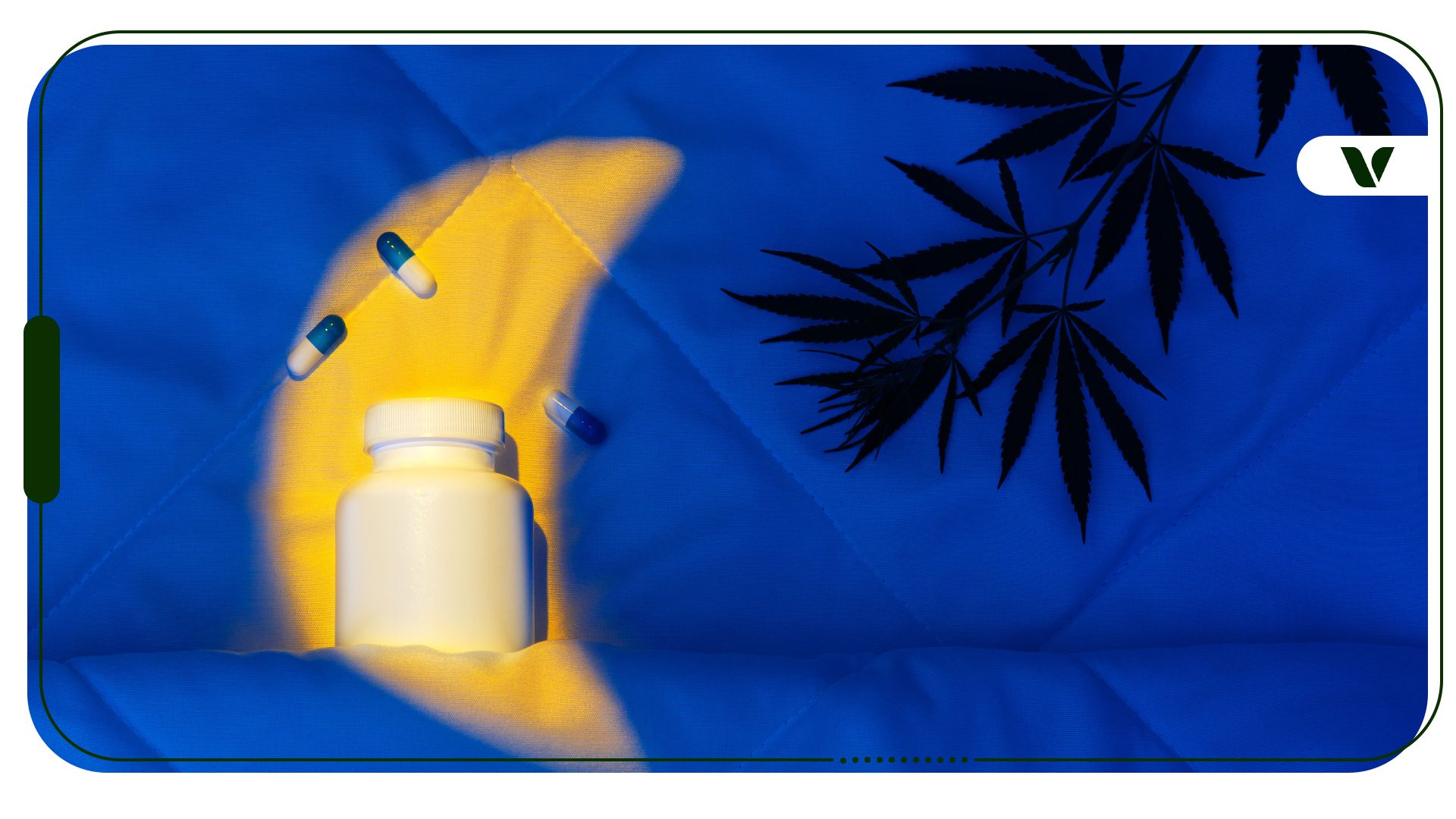Are you ready to grow cannabis at home? If the answer is yes, I’m excited for you. Growing cannabis is fun, therapeutic, and rewarding. It will be a learning experience: germinating cannabis seeds and vegging weed indoors can seem intimidating. It has its ups and downs, but in the end, you walk away with more knowledge from each grow. Before you know it, you could be growing cannabis like the pros.
» If you’re interested in growing your own medical cannabis, sign up for an appointment with a medical marijuana doctor today.
This all begins with planting a seed. Before you start germinating cannabis seeds, you’ll need to establish a growing environment. This is a dedicated indoor space specifically set up for cannabis cultivation with lights, reflective material, climate control, and ventilation. A grow tent is a great option for home growers. They come in various sizes and can be paired with charcoal filters, full spectrum grow lights, and inline fans to help establish the environmental parameters necessary for cannabis to thrive.
Depending on the size setup you choose, you can get started for a few hundred bucks. There are complete grow tent setups starting at $199 and up. If you’re on a tight budget, you’re better off piecing together the items you need.
I utilize the following setup and have seen great results:
- Vivosun 4X4 Grow Tent ($110)
- (2) 600-Watt Mars Hydro Full Spectrum Led Grow Lights ($50 Each)
- ExHale CO2 365-Self Activated CO2 Bag (Replaced Every 2-3 Grows / $35)
- Four-inch AC Infinity Inline Fan with Temp and Humidity Monitor ($129)
Choosing the Right Cannabis Seeds
Choosing the right cannabis seeds will make all the difference in your grow. Explore genetic information about any cannabis seeds you are thinking about growing. Make sure they grow well indoors, see how long the growth cycle from seed to harvest is, and most importantly, be vigilant as to the type of cannabis seeds you buy.
- Regular cannabis seeds produce strong yields but require plants to be sexed to determine males from females.
- Feminized cannabis seeds are 99% females, helping growers to plan for space and budget. Plus, some people hate sexing cannabis plants.
- Auto-flowering (autos) cannabis seeds are born to bud. They begin to flower at an early age rather than by changing light cycles. The downside is lower yields and the lack of the ability to clone autos.
It is also good advice to shop for quality genetics when growing cannabis. The better the quality of the seed line, the better the results from your grow will be. Good seeds produce cannabis plants that grow strong, are resistant to pests, produce high cannabinoid levels, and have dense bud and trichome coverage.
How to Germinate Cannabis Seeds
Once you have your cannabis seeds picked out and in hand, the next step is to germinate them. Like any plant, cannabis needs a few specific conditions to fully prosper. There are two ways you can go about achieving these conditions. The first method is the paper towel method. To germinate your cannabis seeds using this technique, you’ll need some paper towels, seeds, and a plastic bag or baggie. The first thing you want to do is wet your paper towel and squeeze out excess water, leaving it damp but not soaked.
Why You Should Get Your Medical Marijuana Card
Veriheal has satisfied millions of patients nationwide by giving them access to these benefits
- Larger purchase limits
- Peace of mind
- Enhanced legal protection
- Access to higher potency strains
- Save up to 25% on cannabis purchases
- Skip the line at the dispensary
Next, you spread your seeds out over the damp paper towel and fold the towel over, leaving your seeds between two damp paper towels. Last but not least, carefully place the wet paper towel with seeds in a baggie or plastic bag. Seal the package and place it in a warm spot away from direct light, such as the top of a refrigerator or closet shelf. Give it two or three days, and check your seeds. You should find that they have sprouted and are ready to make their journey into the soil or your grow medium of choice.
The next way of germinating cannabis seeds is my preferred method, and that’s to germinate cannabis seeds directly in the soil. I use red solo cups for germinating my cannabis seeds. Poke holes in the bottom of your solo cups going from the inside out to allow for drainage. I use a metal clothes hanger heated with a blow torch to put about five or six drain holes in the bottom of my cup.
Then, fill your solo cups with good soil that doesn’t have or has very little fertilizer. I love the Pro-Mix premium moisture potting mix. Poke a small hole (about one knuckle) into the soil, drop in your seed, and cover it loosely. I like to soak my soil beforehand to avoid shifting my seed or burying it deeper. Place the solo cups with seeds in a propagation tray or pan and put them under grow lights. I run mine on an 18/6 light cycle till flowering.
Choosing the Right Clone When Germinating Cannabis Seeds
Some people have no luck with seeds and prefer to skip this process, opting to grow using a cannabis clone instead. Clones don’t produce as good yields as seeds, and they come with another risk: pests. Clones are often infected with hidden pests waiting for you to nurture them a crop to chomp down on. Pests like spider mites are often not visible until close to flowering unless you use a microscope.
When you bring in a clone, it is a good idea to treat it with a good bio insecticide like those produced by Marrone Bio Innovations. I use Grandevo CG and Venerate CG and have great results. Once you get your clone in soil and under lights, the veg stage begins.
The Vegetative Stage of Cannabis
The vegetative stage of weed is mega crucial. When you are vegging your cannabis plants, you’ll want to have them under a long light cycle. 18/6 is a great light cycle for veg, though some growers choose 22/2 as it may speed up the growing process. Cannabis plants require climate control, too.
They like daytime temps between 70-85 degrees Fahrenheit, anything above that, and they can start being moody. When the lights are off, the temp should be lower by around 5 degrees, which usually occurs naturally. My tents sit around 75-77 degrees with lights on and 68-69 with lights off. During the veg stage, it’s recommended to keep your humidity between 50-70% and not to let it drop below 40%.
When plants are in the final stage of flowering, a lower humidity (40% or less) is recommended. Watch NPK levels, and you should be off to a great start. The next phase will be to flip your plants to flower. If you have questions, help can be found online, in books, and there are many forums you can find answers from.
Author, Share & Comments

